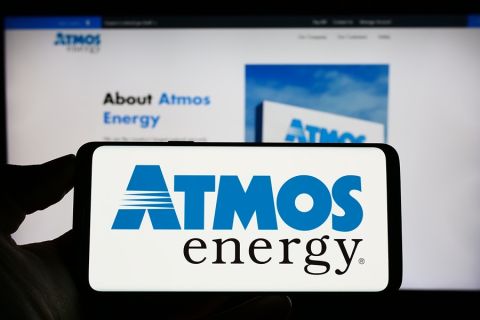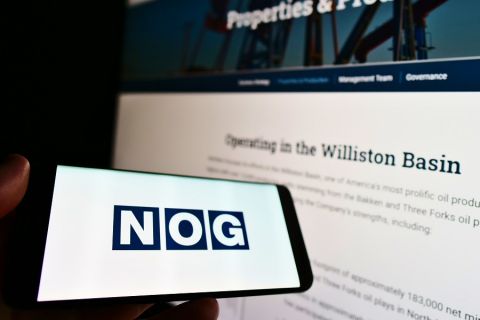Within the last decade, satellite imagery has transformed into a useful tool for operating companies to acquire rapid, realtime information on a variety of assets. “We’re beginning to see the fusion of basic GIS imagery, information, and insight together to create more information- and an insight-based products that help people make decisions,” said John Oechsle, executive vice president, Product and Strategy, DigitalGlobe.
DigitalGlobe owns and operates one of the most agile and sophisticated constellations of high-resolution commercial earth imaging satellites. The QuickBird, WorldView-1, and WorldView-2 satellites together are capable of collecting up to 270 million sq miles (700 million sq km) of quality imagery per year and offer intraday revisit around the globe. The company also has an aerial program offering wall-to-wall coverage of the US and Western Europe.
Rapid information improves workflow
Geointelligence, or as Oechsle calls it, “Location Business Intelligence 3.0,” is really about providing rapid information into the workflow and decision-making process so people can better understand a situation, make intelligent and informed decisions, and rapidly measure the effectiveness of those decisions.
“If we take a look at the oil and gas industry, and predominately E&P, you’re going to see an evolution in which people will continuously use imagery to map out where their assets are, manage their assets, manage their wells, and make sure they understand their production facilities,” Oechsle said.

Over a 30-day period, DigitalGlobe’s commercial sattelites can cover one area multiple times because three times during that 30-day period, all three of have revisited that area nine times. (Images Courtesy of DigitalGlobe)
Three areas where this is transforming the industry on a global basis are in E&P, environmental stewardship, and security. “Understanding the basins and the geographical information around those basins is an important step for operators,” Oechsle said. For this reason, DigitalGlobe is heavily focused on these types of applications. On the environmental side, geospatial imagery can be leveraged to understand a variety of processes including monitoring, impact, and compliance. Security also is an important outcome of using rapid geospatial imagery. Whether it be geopolitical, facility, or site-specific data, having ample access to satellite imagery can provide an extra barrier to mitigate environmental and security risks.
“Those three areas are now going to be heavily leveraging geospatial information,” Oechsle said. “This is relatively new. Less than a decade ago, commercial imagery wasn’t even available. Any imagery that was available was classified, and very few people had access to it.”
Improving commercial access
Commercial imagery has started to ease within the last couple of years. Historically, this information has maintained a very high barrier of entry. Most majors and some of the larger national oil companies have had the capabilities to acquire, process, and store large amounts of geospatial imagery. “The independents and some of the smaller companies did not have the wherewithal to acquire or manage imagery. The barrier of entry was too high; it was too expensive for them to use,” Oechsle said.

DigitalGlobe’s WorldView-2 satellite operates with an 8-band color scheme. This allows for a more in-depth interpretation of images with a much higher fidelity – almost exactly tuned to what the human eye sees.
As the industry changes and DigitalGlobe moves to GeoIn and LBI 3.0, more of this information moves into what DigitalGlobe refers to as the “geospatial cloud.” The barriers of entry have dropped dramatically, which opens up the markets and opportunities for these smaller companies to leverage these types of information and imagery.
Moving forward
The majority of satellite imagery applications have been in midstream and downstream settings. However, there likely will be advancements made for its use in upstream environments. “We are relatively early on in the evolution of where I think E&P divisions of companies are going to leverage imagery,” Oechsle said. One of the things that DigitalGlobe is working on with the oil and gas companies right now is purely around that basic type of simply providing the imagery, identifying assets, and updating some of the old types of maps and/or assets or geocoded GIS types of databases that companies have used while identifying methods of updating and monitoring those assets moving forward.
One benefit provided to its clients is the power of its constellation and its reach. “Over a 30-day period, we can cover one area multiple times because three times during that 30- day period, all three of our commercial satellites have revisited that area nine times,” Oechsle said.
In addition, the company’s 8-band capacity offers more detailed imagery than typical satellites, which maintain four color bands. “Our WorldView-2 satellite has an additional four colors. Those additional four colors allow us to basically interpret images much differently and at a much higher fidelity – almost exactly tuned to what the human eye sees,” Oechsle said. “As a result, we can more clearly see not just vegetation, but the health of that vegetation. Or see 100 ft. (30 m) into water to understand what’s off the shore, what the bottom looks like, what’s in there, etc.” Imagery-based products are creating value in the oil and gas industry. However, many providers are taking this technology a step further. “Instead of just pushing images to our customers, we are beginning to work directly with them, to extract features, detect changes or add other types of information with those images. We are looking to provide deeper insight to our customers,” Oechsle said. Case study: Russia Within the 61,776-sq-mile (160,000-sqkm) mid-western region of Perm in Russia, Lukoil’s regional operation center manages an expansive network of land, facility, equipment, and pipeline assets. The operator’s existing maps were created from field surto human error in measurement. Managing assets over the sizeable region proved especially difficult for Lukoil’s Perm regional operation because they lacked dedicated mapping or GIS personnel to update locations or create new maps and land records. In many places, they simply had no preexisting imagery. Land surveyors at Lukoil needed easy-to-use maps to plan and manage important projects – projects such as tracking company land holdings, determining where to purchase new properties, and mapping new and existing facilities and infrastructure, including holding tanks and pipelines. To compound matters, the federal government of Russia passed an edict in 2004 that requires all oil and gas companies to submit updated maps of E&P facilities. This heightened Lukoil’s need to obtain fresh, usable maps quickly. The operator looked to DigitalGlobe reseller Prime Group, with which it previously had contracted on projects related to equipment, technical maintenance, and process automation. Prime Group’s expertise in system design, development, information infrastructure, and geotechnical services made it a logical choice for providing geospatial resources. The clear choice in imagery for updating large area maps accurately and quickly was high-resolution satellite imagery. Through Prime Group, Lukoil contracted more than 3,089 sq miles (8,000 sq km) of imagery to be delivered over a multiyear period. In 2006, DigitalGlobe provided 2,124 sq miles (5,500 sq km) of data to Prime Group from which the company created highly accurate paper maps. Prime Group then delivered accurate and usable digital orthomosaics to Lukoil’s Perm regional operation center. DigitalGlobe provided an extensive amount of imagery quickly, which helped Prime Group deliver a highquality solution that helped Lukoil to comply with government regulations and meet its own mapping goals. Lukoil obtained accurate imageryderived base maps without a GIS/ Mapping department. Currently its Perm branch is using these maps to track land ownership and manage land, facility, equipment, and pipeline assets. Looking ahead Imagery-based mapping is an area that will prove to be a game-changer in the E&P industry over the next three to five years. “Companies like DigitalGlobe, forward-thinking majors, and other companies in the oil and gas industry are really saying, ‘How do we come together and figure out what the next-generation of imagery-based information products can be?’”
Recommended Reading
Occidental Increases Annual Dividend by 22%
2024-02-11 - Occidental Petroleum Corp.’s newly declared dividend is at an annual rate of $0.88 per share, compared to the previous annual rate of $0.72 per share.
Atmos Energy Announces Quarterly Dividend
2024-02-11 - Atmos’ dividend marks the company’s 161st consecutive quarterly dividend.
From Restructuring to Reinvention, Weatherford Upbeat on Upcycle
2024-02-11 - Weatherford CEO Girish Saligram charts course for growth as the company looks to enter the third year of what appears to be a long upcycle.
Atlas Energy Solutions Declares Dividend
2024-02-09 - Atlas Energy’s dividend represents a 5% increase from the previous quarter’s dividend.
Northern Oil and Gas Ups Dividend 18%, Updates Hedging
2024-02-09 - Northern Oil and Gas, which recently closed acquisitions in the Utica Shale and Delaware Basin, announced a $0.40 per share dividend.





